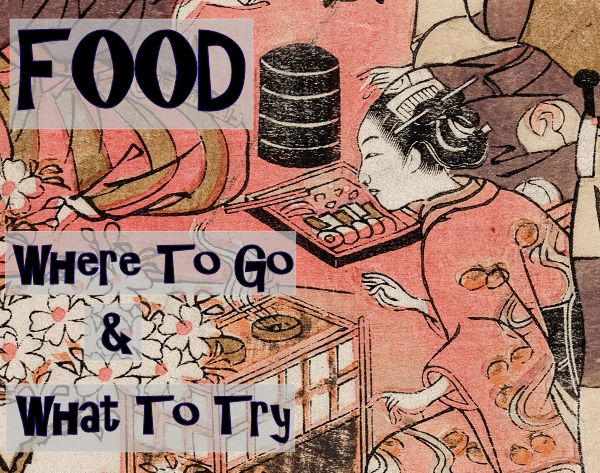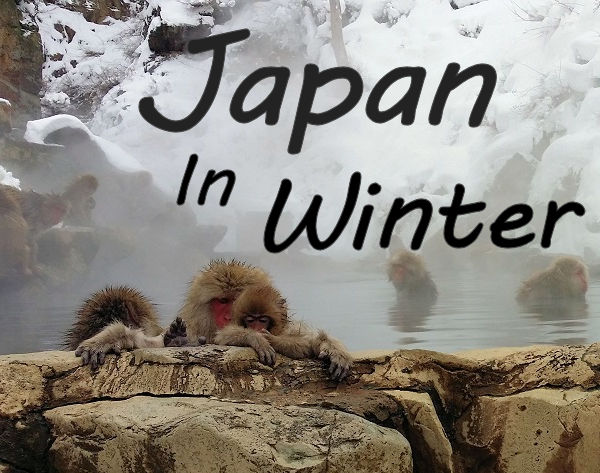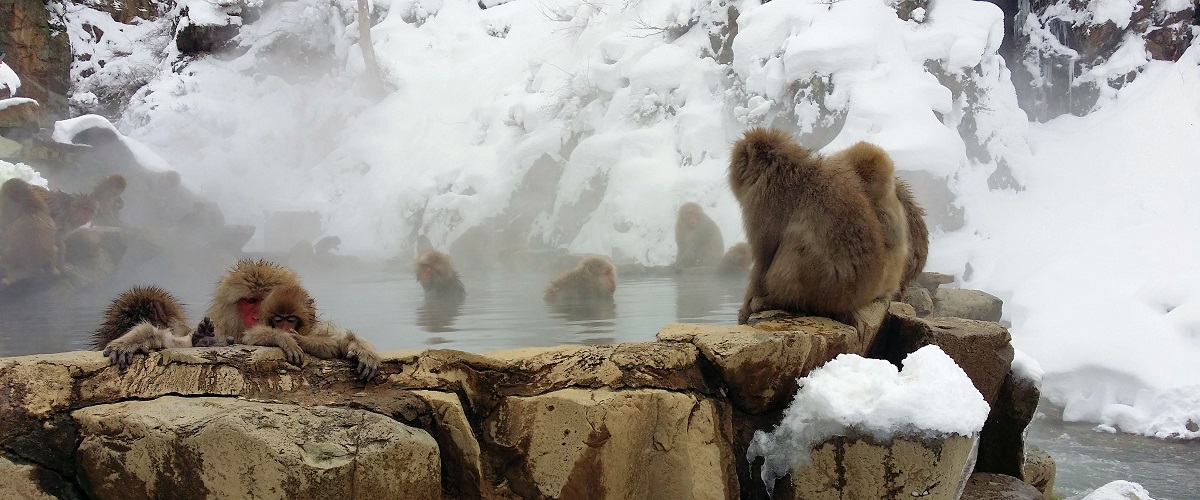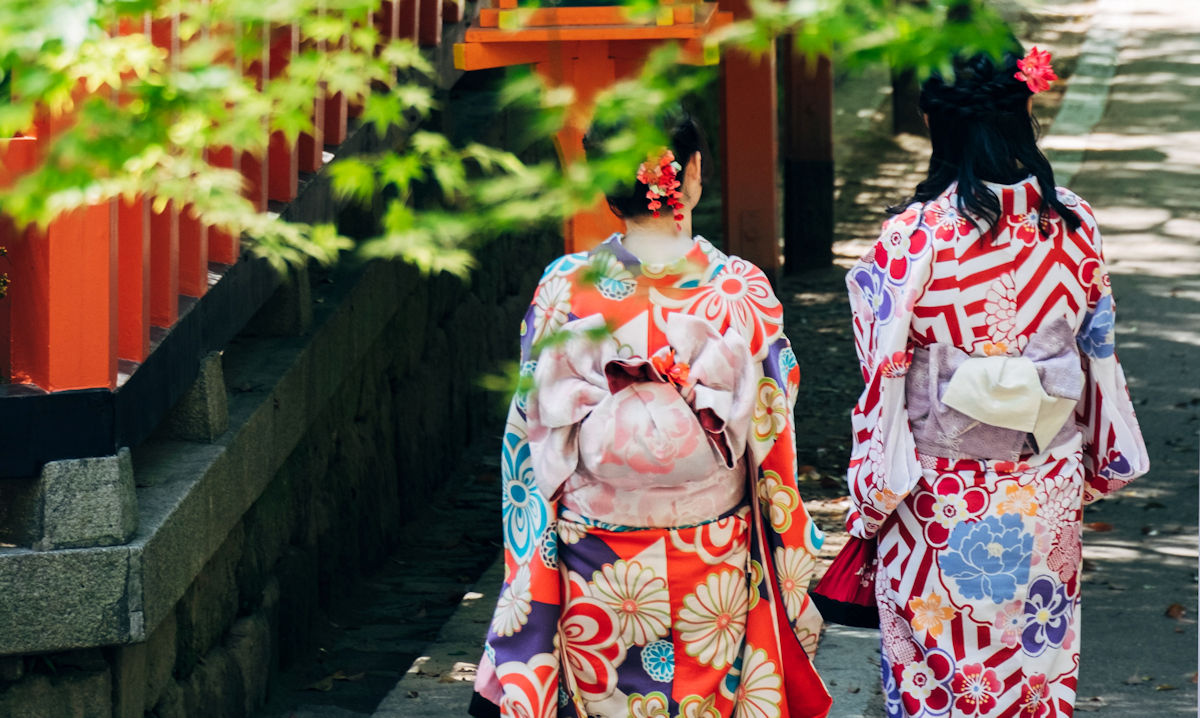Japan is an intriguing paradox. A mix of cutting edge technology and centuries old traditions. In the city you may walk past neon lights and arcades only to enter a restaurant where sliding paper screens partition low tables, where you sit on the floor, then order from computer screens. At night you can sleep in anything from a high tech capsule hotel to a traditional inn, called a ryokan, where you sleep on tatami mat covered floors. The bathroom will probably have a toilet with gadgets and gizmos aplenty, but there’s a chance it might not have a shower or a tub. The only place to wash and bathe might be the ryokan’s onsen (communal bath house).
When I think of Japan it’s just this unexpected dichotomy I miss most…well… and the food 🙂
Post Highlights
A little Background
On Buddhist temples and Shintō shrines
Buddhist temples and Shintō shrines will likely be a part of any visit to Japan. Whether intentionally, as the larger ones are often considered must visits, or by mere happenstance, as you might stumble upon a smaller one strolling down an alley or through a marketplace. Knowing a few key differences between the two can help you better understand what you’re seeing, and hopefully deepen your appreciation and enjoyment.
Here are just a few very simplified and brief distinctions –
Shintō is the indigenous religion of Japan, involving Japanese mythology and the worship of Kami ~ spirits. Often thought of as nature spirits they can be local, the guardian of a specific place, or more all encompassing like Fujin, the god of wind or Amaterasu Omikami, the celestial sun goddess and also the goddess the Japanese royal family claim descent from.
Shintō shrines are recognizable by their Torii, large stylistically distinct gates. Torii symbolize the gateway between our world and the spirit world. In Shintō nature is revered because the spirits reside there, inside the rocks and trees.
Unlike Shintō, Buddhism made its way to Japan from India, by way of China and Korea, undergoing transformations (or a branching off into different paths) before and after arriving in Japan. There are rather a lot of different branches (sects, schools of thought). I found Zen and Pure Land Buddhism particularly interesting. I will touch more on them (to the best of my ability) in my other posts when I talk about the actual temples I visited and the ‘branches’ associated with those temples.
But for a more broad and eloquent introduction I highly recommend, Understanding Japan: A cultural history, taught by professor Mark J. Ravina of Emory University, offered by The Great Courses. (The Great Courses are one of my favorite things in life!) Professor Ravina devotes a few lectures on the introduction of Buddhism to Japan and he is excellent in his overall presentation on the cultural history of Japan.
Praying Etiquette – Both Shintō shrines and Buddhist temples incorporate Chozu – a rite of symbolic purification involving washing the hands and mouth using special ladles (dippers). Although it is not required for visitors, if you wish to participate, scoop the water with the right hand and pour some into the left hand to purify it, then switch hands to purify the right. Switch hands again to pour water into the left hand to rinse the mouth, do not put the ladle to the mouth. Spit the water out on the ground not back in the basin, then purify the left hand again and lastly rinse the handle of the ladle with the rest of the water before putting it back.
At a Shintō shrine, first, put your offering in the box, then ring the bell, bow twice, clap your hands twice, then close your eyes to pray and then bow one last time.
Buddhist temples vary widely, like Shintō shrines you may also make an offering, there may also be a gong to ring, (there may be incense), but you definitely don’t clap your hands. You bow slightly and quietly join your hands with a calm mind and offer your prayer.
A little Background – A Brief Recap
- Buddhism came to Japan, Shintō is indigenous.
- You’ll know you’re at a Shintō shrine by the presence of Torii gates.
- The two religions have become very intertwined in Japan. You may find Shinto shrines located inside Buddhist temples. Kiyomizu dera, for example, is a Buddhist temple, but there are also Shintō shrines to various spirits on the grounds there.
- Both have areas for performing symbolic purification with water. Buddhist temples often use incense smoke for purification as well.
- ** While a Buddhist temple is a very sacred place, a Shintō shrine is the actual place where a sacred spirit lives. **
More Background
Suggested reading and watching:
Is your trip over a month away and you just can’t wait?
Watch:
– The Great Courses – Understanding Japan: A Cultural History, taught by professor Mark J. Ravina of Emory University.
Want something to take along for the airport or the flight, or something to read by the pool, but don’t want to lose sight of where your going or forget about where you are?
Read:
– The Tale of Genji, by Murasaki Shikibu – Written early in the eleventh century, this novel portrays courtly life in medieval Japan.
– The Pillow Book, by Sei Shonagon – This is the diary of a courtesan in Japan at the end of the tenth century.
– The Book of Five Rings, by Miyamoto Musashi – Written by a Japanese swordsman around 1645, on the Japanese way of the sword.
– Zen Mind Beginner’s Mind, by Shunryu Suzuki – This book is most often recommended as the first book to read on Zen.
– The Essence of Shintō: Japan’s spiritual heart, by Motohisa Yamakage – A terrific, easy to understand introduction to Shintō.
Transportation in Japan
First off don’t be scared to rent a car in Japan. Rentals have excellent navigation systems. If you’re from America and worried about driving on the other side of the road, most rental cars in Japan also have lane assist to help keep you on the correct side and will beep if you are drifting over the line. Having driven in both Australia and England without lane assist I can say, having it, is a very helpful feature.
While there are certainly some places where you need a car, most places can be accessed by train or bus. The best and easiest way to get around Japan is by train. With high speed trains called Shinkansen you can travel from Tokyo to Kyoto in two hours and fifteen minutes.
There are special rail passes available to tourists. The most common rail pass is the JR pass. You can buy the JR pass on arrival (which my friends and I Have done and after the long flight we wished we’d taken care of it beforehand) or before arrival through an authorized agent. The individual national railway sites, of which there are six (JR East, JR West, JR Central, JR Kyushu, JR Shikoku and JR Hokkaido) don’t sell the JR pass themselves. However, these individual rail companies do sell regional passes, which only cover travel on their own lines, but depending on where (or how far afield) you plan on traveling this might be a better option for you. The ‘regional’ passes do get a little confusing when trying to figure out what is and isn’t covered. Something you don’t have to worry about (as much) with the JR pass.
A Few Words & Helpful Phrases
| Hello | Kon’nichiwa |
| Good Morning | Ohayo Gozaimasu |
| Thank You | Arigatou gozaimasu |
| Excuse Me | Sumimasen |
| I Don’t Know | Wakari masen |
| How Much Is This? | Kore wa ikura desuka? |
| Where is ______ ? | _______ wa doko desuka? |
| Stop Here Please | Koko de tomatte Kudasai |
| Water | Mizu |
While a lot of the people I encountered in Japan spoke English, many more did not, most notably, the taxi drivers. If you’re taking a taxi to a hotel (or anywhere) it is always helpful to have a little map either printed out or saved on your phone, so you can show it to the driver.





